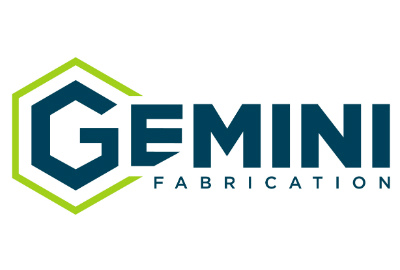
When was the last time you got to experience the process in which pipe is fabricated? If you are answering “I haven’t”, then let me walk you through this life cycle. This process begins when the RFP and PO has ended. This scope is limited to prefabricated carbon steel piping.
Step 1 – Confirm IFC Drawings, MTO’s and Quality docs
It is extremely important to first ensure the SOW (Scope of Work) is understood. Which of course should be done during the tender process. You need to confirm the IFC (Issued for Construction) drawings have been signed off and clearly understood for all requirements. Make sure that all quality control, pre-construction formalities and approvals are in place in advance as per the schedule.

Step 2- Receiving material and handling.
All material and equipment that is provided to Gemini goes through a comprehensive receiving process. Material or equipment that arrives at the yard is assessed by a quality inspector and/or the receiver, and if no damage is noted the item is formally received into the system and tracked. Items that require more stringent preservation techniques are housed indoors within our receiving warehouse and moved to the required area when needed. Material is inventoried and organized based on assembly sequence. Smaller fittings and parts are placed within crates and are locked when accessibly to crates is not required. Foreman for each discipline maintain a crate of material and are responsible to ensure that the inventory is managed and tracked properly to each isometric and structural print that is being executed.
All client supplied Free Issue materials are received to the same standards as Gemini procured materials; and in addition, an MRR is completed within 48 hours and issued to the client. In the event there is an OSD, a separate document (OSD Form) will be completed and submitted along with the applicable MRR complete with photos and documentation. Gemini will share MRR and OSD logs with the client as required to ensure traceability and issue and receipt of project materials to ensure potential constraints due to material delivery are identified and removed as quickly and effectively as possible.
Gemini also utilizes an inventory management system. As we are fabricating and assembling the spools within the Ponoka yard, the management of tools and material is simplified. Gemini maintains an on-site tool crib where all tools are managed and signed out of. Personnel, Gemini employees or contractors, who require tools can sign out pieces and return once the work is complete. The management of the tools & equipment, which includes preservation and maintenance, is the responsibility of the maintenance staff employed by Gemini.
Step 3 – Material is moved into area.
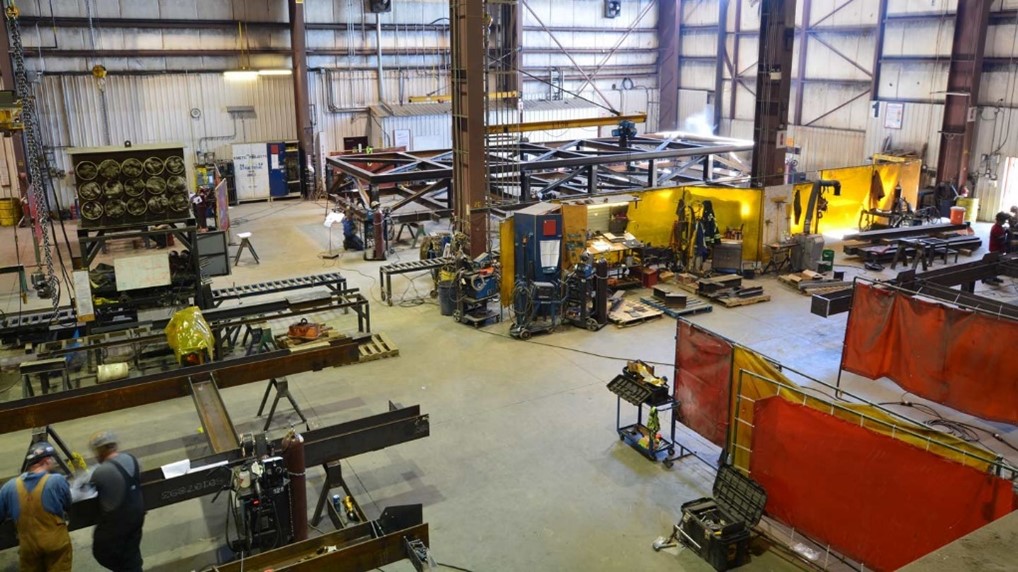
Gemini uses a process with the least amount of handling. Once material has been received, all materials are delivered to the respective disciplines, considering the progression of assembly. Where possible, work is planned at Gemini such that activities flow in one direction from start to finish, having functional services located central to all. Material for pipe spools is moved into the cutting and labeling area of project specific information by pup cutters (piping staff). Material is then set on rollers and rolled into the shop for the fabrication process to begin ensuring that each component is approved by qualified staff before leaving this discipline.
All parts are picked per project, per module (or package) and per designated isometric drawing before being moved into the fabrication area. This ensures that the fitting and welding activities run at optimal progression and all parts have received multiple quality checks for correct size, grade and schedule therefore reducing the risk of errors or rework.
Step 4 – Fit Up and Tack Welding
Once received in the shop, pipe is set for the fitter who will then complete final prep of the ends and verify the dimensions are correct and the pipe pup is accurately cut; adjusting if needed. However, this is barely needed as Gemini employs the “A” team. It is at this stage that scale, rust, or factory manufacturer coatings are mechanically removed to provide optimal welding conditions and ensure the final weld is not affected.
The pipe pup will then have other component’s (i.e.: flanges, 90’s, tee’s) fit up and tacked to the piping; this is performed by the piping staff and the spool is then welded out.

Step 5 Welding where the magic happens.
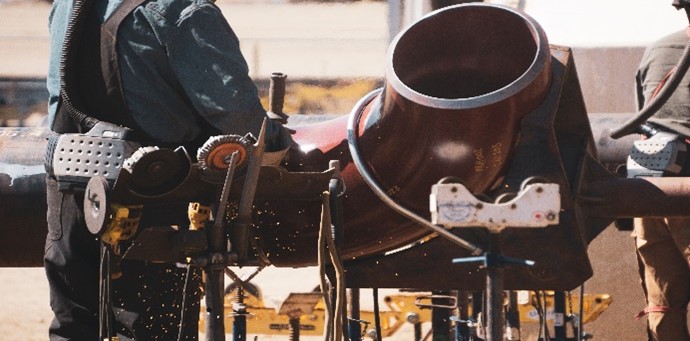
Welding is performed using an approved WPS (weld procedure) applicable to the application (required piping specification). Each weld layer shall be cleaned free from all slags and debris before starting the next pass. During the root pass of the weld, each stop start between the tack welds is ground down and feathered back to full fusion and proper weld penetration. Each bridge-tack weld is fully removed by mechanical means throughout the progression of the root pass until the root is complete. The root pass is then cleaned by mechanical means (buffing or grinding) to sound metal to ensure that any slag, spatter, or porosity that may adversely affect the quality of the weld has been removed. This process is performed throughout all sequential passes until the weld is complete. Upon weld completion, all slag, spatter, and undercut is cleaned and removed, the weld button is ground down, and the welder has put his identification marker on the weld so that it can receive its proper inspection. In welding, if you start clean, you will finish clean. All welds are being continuously monitored and visually inspected by our highly experienced and qualified support team.
Step 6 – NDE
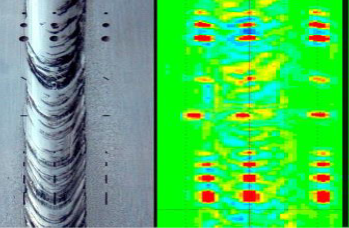
The extent of this process will be in accordance with the project specifications however the acceptance criteria shall be in accordance With ASME B 31.3. Gemini Fabrication has a strict focus on quality and the quality control lifecycle. Here are a few key points to highlight:
Gemini employs multiple CWB Level 1 & 2 Inspectors who ensure quality through progressive inspections, ongoing surveillance, and systematic quality activities in accordance with our Quality Manual.
Gemini will ensure the quality of work is maintained through the implementation of Gemini’s Quality Management System including inspection test plans, quality checklists and a thorough understanding of the project requirements, specifications, timely inspection processes, and ongoing surveillance.
Gemini proactively maintains less than a 1.0% repair rate. Gemini does so by ensuring those performing the work are fully qualified and competent for the role to which they are assigned and with a clear understanding of the project requirements and specifications and the need to do it right the first time.
Step 7 – Hydrotesting & Paint
All spools that have been completely fabricated and inspected will then be released for hydrotesting and paint (if required). In the event paint is required prior to Hydro testing then the welds are marked off and are finished once Hydro testing is completed.
Hydrotesting Gemini Fabrication takes two approaches to these activities.
Approach 1. Off module hydrotesting: This approach is utilized for fabricated piping that is shipped loose, or benefits for the most cost-effective approach to be hydrotested prior to module assembly. In this approach, spools that are released by our quality control team are moved to the optimal laydown for an ‘off-module’ hydrotest.
Gemini works to maximize test packages to gain optimal schedule and cost efficiencies by bolting together multiple spools that are the same specification and hydro pressure. Hydrotesting that is performed outdoors utilizes water or water/glycol mixture depending on the time of year and weather conditions. We have multiple means to verify tests including recorders, digital gauges, photographs and work closely with our clients and third-party inspectors to ensure all the ITP and project requirements are met.
Post hydrotesting, spools that require external coating will then be moved into our own on-site paint facility. Utilizing our 13,000 sq. ft. dual bay paint and blast facility, Gemini can provide our clients with quality external coating. We provide a cost effective, safe and efficient paint service to ensure client budgets and schedules are maintained. Once completed, spools are inspected by a member of our quality team prior to being released from paint.
Approach 2. On module hydrotesting: This approach is utilized for most of the modules we fabricate and assemble. Gemini works to install fabricated piping onto the module, complete all tie-in welds and assembly prior to hydrotesting. This reduces the handling of piping, and we can effectively tie multiple lines on the module together, making it the most cost-effective solution for hydrotesting. This also lends to our commitment to our staff and clients for maintaining the safest work environment by decreasing the number of personnel who need to interface on the module. In this approach, spools that are released by our quality control team are moved into paint prior to hydrotesting. Spools that require external coating are moved into our own on-site paint facility. Utilizing our 13,000 sq. ft. dual bay paint and blast facility Gemini can provide our clients with quality external coating. We provide a cost effective, safe, and efficient paint service.
Post paint, spools are inspected by a member of our quality team prior to being released from paint and moved to the module for assembly and on-module hydrotesting. Like Approach 1, hydrotesting is performed outdoors and utilizes water or a water/glycol mixture depending on the time of year and weather conditions. We have multiple means to verify tests including recorders, digital gauges, photographs and work closely with our clients and third-party inspectors to ensure all the ITP and project requirements are met.
Gemini Fabrication has 7,000 L of glycol on location to accommodate weather conditions. With a dedicated policy to Environmental, Gemini has a blow back and drain policy. All spool ends come with cap ends that are zipped in as to not fall out in transport.
Step 8 – Spool Install
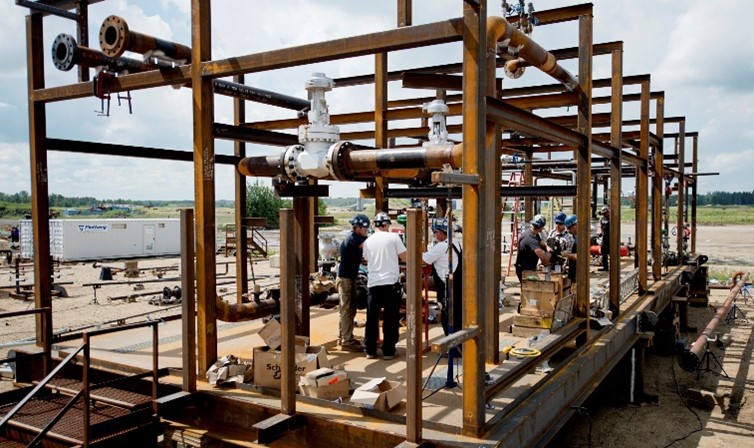
Gemini Fabrication utilizes a steady workforce and our facility size to its advantage in providing our clients the most cost-effective and schedule driven solution while achieving increased efficiencies in our Ponoka fabrication and module facility.
In following the module sequencing plans per project, Gemini performs the overall scope of work to align with construction needs, ensuring that modules are ready to ship on or before the date noted. We utilize large module laydown areas and ensure that all materials that are picked in advance per module are staged at the laydown for the assembly activity. Each module has an assembly package created and issued by the Gemini team. This includes IFC drawings, client specifications, standard details, and complete parts lists that have been released from our warehouse.
Our assembly crews work with our structural crew to erect all structural modules as soon as they are available. Module steel is erected at height with assembly completed to the greatest possible degree, allowing for pipe spools and components to be laid in place as per sequence. Modules are fabricated in tiers when applicable, opening multiple work fronts for various disciplines creating the greatest possible efficiency and value for our clients.
Modules are assembled as per IFC drawings and client specifications; ensuring that all ITP points are met, and continual quality surveillance is performed. We verify all spool projections and elevations and work with our clients to ensure the information is documented and managed as per their individual needs.
Step 9 – Insulation & Test Fit Capabilities

If the client requires full test fit capabilities, we have the space and manpower to do so.
Insulation will be installed by tier and working from the inside and outwards on the module; this minimizes damage to the material. Once all quality requirements are met and satisfied, Gemini will perform the final walk and prep for shipment/long term storage & preservation.
Step 10 – Ready to Ship

Modules will be continuously inspected as per approved ITPs, and progressive walkdowns completed internally by Gemini Fabrication. Our Quality team will work closely with client TPI’s to provide Notice of Inspections to ensure all witness and hold points are correctly addressed. Progressive walkdowns both internally and along with the client Third Party Inspectors will ensure that modules are deficient free and RTS as per scheduled dates.
Client representatives will have full access to our Module Yard during the execution of the project. In addition, we will ensure they are equipped with a functioning workstation at our facility and direct lines of contact to our Quality and Project Management teams. Experience has taught us that continuous client interaction lends to quick and effective execution and corrective actions that mitigate costs and schedule impacts.
“A team you can count on. A product you can trust”.
Travis Sharpe
Director of Business Development & Marketing, Gemini Fabrication
Main: 587-850-0453 | Cell: 403-651-8300
traviss@geminifab.ca | www.geminifabrication.com
#900, 550 6th Ave SW, Calgary T2P0S2
Share This:





 CDN NEWS |
CDN NEWS |  US NEWS
US NEWS 






























Canada’s Advantage as the World’s Demand for Plastic Continues to Grow